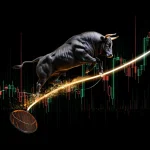
Second Level Thinking: Thrive in Investing
Nov 10, 2024
Spill your coffee yet? Good. Now, let’s talk about the market’s dirty little secret: it’s not just a chaotic rollercoaster; it’s a psychological battleground where ancient wisdom clashes with modern mayhem. Forget what you think you know about investing. We’re here to burn the rulebook and forge a new path that harnesses the power of second-level thinking.
Imagine a world where Sun Tzu’s “Art of War” isn’t just a military treatise but your guide to navigating the cut-throat world of high finance, where the ancient philosopher’s principles of strategy and deception are your keys to unlocking market dominance. It’s time to embrace the unexpected, challenge conventions, and rewrite the game’s rules.
The secrets to investing success lie not in following the herd but in defying it. Prepare to question everything, for the market is not a place for the faint-hearted or the intellectually stagnant.
Proposition: Unveiling the Power of Second-Level Thinking
“During chaos, there is also opportunity.” So said Sun Tzu, and this statement rings true in the chaotic investing world. While others scramble to react to market movements, we propose a different path—a path of proactive, calculated strategy. We call it second-level thinking, a mindset that challenges the status quo and digs beneath the surface to uncover hidden opportunities.
It’s time to discard the flat-earth theories of conventional wisdom and embark on a financial voyage that harnesses the best of ancient insights and modern strategies. Together, we’ll navigate the treacherous waters of market psychology, behavioural biases, and technical analysis to emerge as fearless investors who make their own rules and thrive in the eye of the financial storm.
The Time-Traveler’s Trading Floor: Clash of the Titans
What if we threw Genghis Khan, the ultimate conqueror, into a trading room with George Soros, the king of currency speculation? Imagine the intellectual sparks flying as they debate market dominance. Khan, known for his relentless pursuit of empire-building, might advocate for a ruthless approach, conquering markets with sheer force. On the other hand, with his reflexivity theory, Soros would counter that understanding and manipulating market expectations is the true key to success.
Now, let’s invite Leonardo da Vinci to the party. The Renaissance master, with his insatiable curiosity, would likely advocate for a more analytical approach, urging us to study market patterns and identify underlying forces. He might even sketch intricate trading strategies, blending art and science to pursue financial success.
Ancient Wisdom Meets Modern Minds: A Maverick’s Collaboration
Picture this: Sun Tzu, the ancient Chinese strategist, teams up with Warren Buffett, the legendary investor. Over a game of Go, they discuss the art of anticipating opponents’ moves. Sun Tzu emphasizes the importance of deception and knowing your enemy. At the same time, Buffett nods in agreement, sharing stories of his value investing approach and the importance of understanding a company’s true worth.
Enter Nassim Nicholas Taleb, the modern-day risk management expert who introduces his concept of “antifragility.” He argues that enduring market shocks is not enough; we must thrive on them. The trio’s collaboration results in a strategy that combines Sun Tzu’s strategic foresight, Buffett’s value investing, and Taleb’s emphasis on resilience, creating a formidable approach to navigating market volatility.
The Psychology Pyramid Scheme: Exposing the Market’s Dark Secret
The market is one big pyramid scheme, and human nature is the con artist. It’s time to expose the tricks played by our minds, pulling back the curtain on mass delusions that drive market behaviour. From fear and greed to herd mentality, we’re all players in a psychological drama that unfolds on the trading floor.
Psychologists Daniel Kahneman and Amos Tversky understood this game well, revealing how cognitive biases cloud our judgment. Their work is like a spotlight on the market’s stage, illuminating the irrational actors driven by FOMO, confirmation bias, and the sunk cost fallacy. Understanding these biases is your secret weapon, allowing you to predict and exploit the crowd’s every move.
But wait, there’s more. Behavioral finance takes this insight further, showing how these biases play out in the market. It’s like having a script for the crowd’s chaotic performance, enabling you to anticipate their every move. The market’s greatest con is also your greatest opportunity.
Mass Delusions: A Historical Perspective
Let’s travel back to the 17th century when tulip mania swept through the Netherlands. A single tulip bulb commanded prices higher than a craftsman’s annual wage. Sound ridiculous? It was. But it reveals the power of crowd psychology. Fast forward to the 2000s, and we see a similar story with the dot-com bubble. Investors, driven by FOMO, poured money into companies with little regard for fundamentals. The result? A spectacular crash that left many ruined.
These are cautionary tales, reminding us that mass delusions are real and dangerous. But for the second-level thinker, there are also opportunities to profit from madness. By recognizing and understanding these psychological pitfalls, we can position ourselves to benefit from the crowd’s irrationality.
Technical Analysis Gone Rogue: Uncovering Hidden Patterns
Technical indicators are like secret codes, revealing the market’s underlying narrative. Forget dry statistics; we’re talking about adrenaline-pumping action signals that predict the crowd’s next move. Once a mysterious mathematical concept, Fibonacci sequences become our compass, pointing us toward potential turning points in asset prices.
Chart patterns, like the head and shoulders or the cup and handle, are not just pretty pictures—they’re roadmaps to human stupidity. Support and resistance lines aren’t just arbitrary; they represent investors’ collective fears and hopes. We become market whisperers who anticipate and exploit price movements by mastering these tools.
But it’s not enough to see what everyone else sees. Second-level thinking demands that we question and interpret. Are these indicators signalling a true shift, or are they a trap set by market makers? It’s up to us to decipher the true story behind the charts.
Unlocking the Matrix: A Maverick’s Perspective
Imagine if Neo from “The Matrix” traded stocks instead of fighting agents. He’d see the market for what it truly is—a complex simulation where patterns and probabilities rule. Like him, we can learn to bend the rules to see beyond the obvious. We can become market hackers, exploiting loopholes that others miss.
Technical analysis is the key to unlocking the market’s matrix. It’s not about predicting the future but understanding probabilities and exploiting patterns. By recognizing recurring market behaviours, we can make informed bets, stacking the odds in our favour. Technical analysis is an art that blends statistics, psychology, and a healthy dose of maverick thinking.
The Contrarian’s Cookbook: Serving Up Unconventional Strategies
Are you ready for a taste of the unconventional? Buckle up because we’ll serve you a feast of market strategies that defy the norm. Our secret ingredient? A dash of ancient wisdom, a pinch of modern madness, and a healthy dose of statistical probability.
Take, for example, the concept of reversion to the mean. This strategy is like a financial time machine, predicting that a return to average conditions will follow extreme events. It’s a contrarian’s dream, allowing us to profit from the market’s overreactions.
Or consider the power of trend following. By recognizing and riding market waves, we can harness the momentum of crowd behaviour. It’s like surfing—you don’t fight the tide; you catch the wave and ride it to shore.
Ancient Wisdom, Modern Applications: A Match Made in Maverick Heaven
Sun Tzu once said, “Victorious warriors win first and then go to war, while defeated warriors go to war first and then seek to win.” This ancient wisdom applies perfectly to investing. Before entering a trade, we must define our strategy, exit points, and risk management.
Modern quants have taken this concept further, using algorithms to identify and exploit patterns in market data. Combining ancient principles with cutting-edge technology allows us to create dynamic trading strategies that adapt to changing market conditions. It’s a beautiful marriage of timeless wisdom and innovative thinking.
The Grand Finale: Question Everything, Trust Nothing
As we reach our finale, it’s time to plant an intellectual time bomb. Question everything you thought you knew about markets. Are they efficient? Is the crowd always wise? Can we truly predict the future from the past? By challenging these assumptions, we open ourselves to a world of possibilities.
The market is a complex, ever-evolving beast. To master it, we must embrace a growth mindset and constantly learn, adapt, and evolve. The moment we think we’ve figured it out, we’ve failed.
So, as you embark on your financial journey, stay curious and hungry and never settle for conventional wisdom. Challenge the status quo, seek contrarian perspectives, and always remember—that the market is a wild dragon that only the bold and prepared can hope to tame.
In conclusion, we leave you with a manifesto for market mavericks:
1. Question everything: Challenge conventions, seek hidden truths, and embrace intellectual rebellion.
2. Think in probabilities: Understand that the market is a game of odds, not certainties.
3. Master market psychology: Study the crowd’s behaviour, anticipate their moves, and exploit their biases.
4. Be a contrarian: Defy the herd mentality and find opportunity in the road less travelled.
5. Adapt and evolve: The market is dynamic; your strategies must be, too.
6. Blend ancient wisdom with modern tools: Both have value, from Sun Tzu to machine learning.
7. Take calculated risks: Embrace risk as an ally, not an enemy. Manage it,












